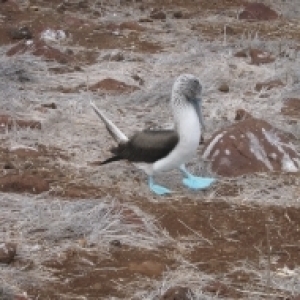'Pheasant Berries'
or
The Himalayan honeysuckle, though not widely known among honeysuckle fanciers, does have its devotees, and is particularly popular in the United Kingdom as well as in the Pacific Northwest region of the United States. The plant, as the name suggests, is a native of the Himalayan area of China, though does not grow in the higher elevations but rather in more temperate zones. It is a medium sized shrub, usually topping out at about 6 feet in height. It is frost hardy and fast growing, and all in all a tough plant. Seemingly killed by a hard winter freeze it will usually, though not always rebound in the spring, growing as tall as ever by mid summer. Where it is not bothered by frost and cold, the bamboo-like stems will last for several years, and are replaced by new stems as they die off.
The Beastly Side -The Himalayan honeysuckle can be quite an invasive plant however, given the right conditions. Grown as a single plant or in a small group in the Pacific Northwest, it generally behaves itself. In New Zealand however, it is considered a pest weed, and if left unchecked could take over the entire country. Whereas in the United States and the UK, information on the Himalayan honeysuckle is directed towards care and pruning (it doesn't require too much of the latter), information dispersed in New Zealand usually addresses how to kill it. Introduced as a garden ornamental a little over 100 years ago, the plant now faces regional pest management strategies, coupled with area surveillance, so that it may be stamped out when seen wherever it doesn't belong. Formulas are available to the public for foliage spray and stump treatment. In New Zealand the plant is surely seen as attractive, one can't help that. It's just not wanted.

Comments
Sign in or get an account to comment.


